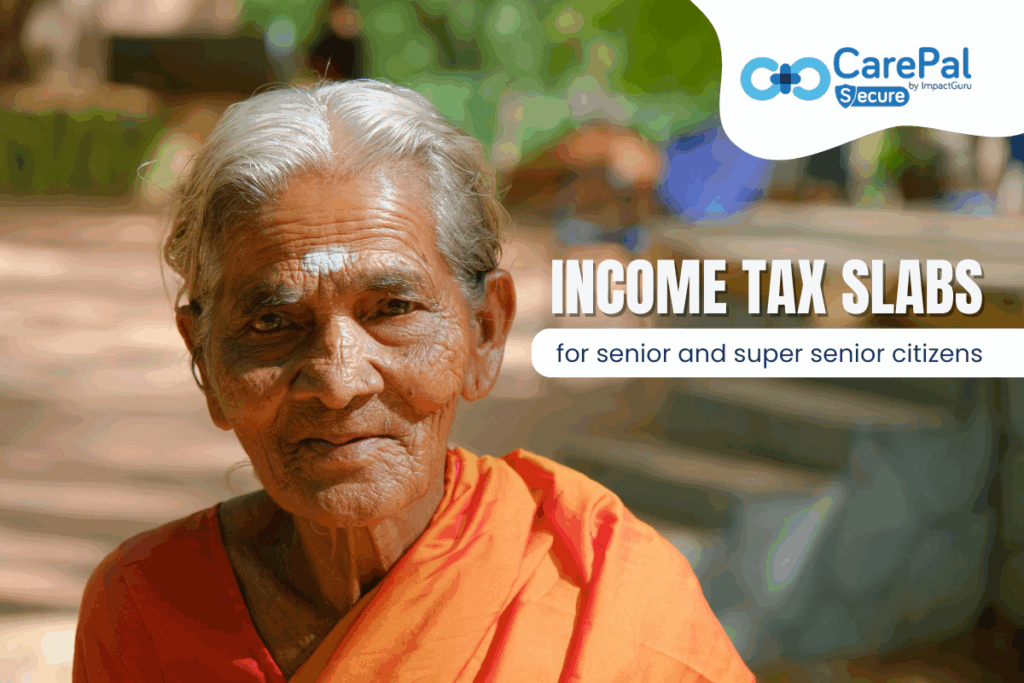Income tax slabs for senior and super senior citizens: A complete guide for FY 2025–26

The Union Budget 2025 had made huge overhauls to India’s income tax, with a view to offering a flurry of relief to the taxpayers, specifically senior and super senior citizens. The article talks about the changes in tax slabs, new tax benefits, and decisions to be taken by senior citizens to maximise the returns with the onset of the new fiscal year.
Understanding the categories
- Senior Citizens (Aged 60 years or more but less than 80 years on the last day of the financial year).
- Super Senior Citizens: Aged 80 or more during the previous year.
These categories are important because they decide the tax slabs and deductions.
Old vs. New Tax Regime
Old tax regime
Old tax regime provides for a host of exemptions and deductions. The tax slabs vary according to age.
In Older Adults (aged 60 to 79):
- Up to ₹3,00,000 – Nil
- ₹3,00,001 to ₹5,00,000 – 5%
- ₹5,00,001 to ₹10,00,000 – 20%
- Above ₹10,00,000 – 30%
For Super Senior Citizens (80 years and above):
- Up to ₹5,00,000 – Nil
- ₹5,00,001 to ₹10,00,000 – 20%
- Above ₹10,00,000 – 30%
These slabs have not changed over the years.
New Tax Regime: Revised Slabs for FY 2025–26
New Tax Regime comes with reduced tax rates and almost no exemptions. The Union Budget 2025 rolled out the new slabs under the new tax regime as follows:
- Up to ₹4,00,000: Nil
- ₹4,00,001 to ₹8,00,000: 5%
- ₹8,00,001 to ₹12,00,000: 10%
- ₹12,00,001 to ₹16,00,000: 15%
- ₹16,00,001 to ₹20,00,000: 20%
- ₹20,00,001 to ₹24,00,000: 25%
- Above ₹24,00,000: 30%
The basic exemption limit has been hiked to ₹75,000 and the basic deduction to ₹50,000, which would further give a breather to the taxpayers.
Benefits to Senior and Super Senior Citizens
- Higher exemption limits: Senior citizens in the old regime have a basic exemption limit of ₹3 lakhs and for super senior citizens it is ₹5 lakhs.
- Standard Deduction: Increased to ₹75,000 in the new regime, which will help pensioners and salaried employees.
- Exemption under Section 194P: A resident senior citizen is exempted from filing return of income, if the bank has deducted the necessary tax on his income and deposited it with the Central Government and the assessee has also reported such income to the bank.
- TDS allowed upgradation: Limit of TDS exemption on interest income for senior citizens has been increased from ₹50,000 to ₹100,000, thereby reducing TDS on this class of population.
Deductions and Exemptions: Senior citizens can claim deductions under the following heads as per the old tax regime:
- Section 80C (For investments in PPF, NSC, ELSS etc.) – Up to Rs 1.5 lakh.
- Section 80D: Deduction for premiums on health insurance up to Rs 50,000.
- Section 80TTB: Interest on deposits up to ₹50,000.
- Section 80DDB: Medical treatment of specified diseases of Rs 1 lakh.
These deductions have been scrapped by the new tax regime.
The selection of an old or new tax regime is based on individual situations:
- Old Regime: Advantageous for people having large deductions and exemptions.
- Old Regime: More complex structure with higher tax rates and more deductions.
Taxpayers should compute their tax liability under each system and calculate the effects of each to identify the most beneficial choice.
Conclusion
The Union Budget 2025 has taken steps to help reduce the tax liability of senior and super senior citizens. Knowing the new tax slabs and potential deductions will empower taxpayers within these age brackets to plan better in order to minimize their tax liabilities. It is highly recommended to consult a tax specialist to best maneuver through the thicket of either of the tax regimes.

Omprakash Lanjewar is passionate about making health insurance simple and accessible. With a background in finance and strategy, he shares clear, practical insights to help readers navigate their insurance choices. Outside of work, Omprakash enjoys swimming, cycling, and staying connected with industry trends.












